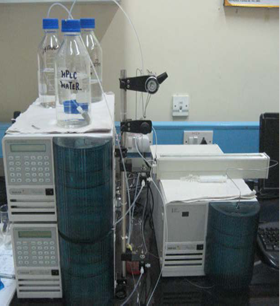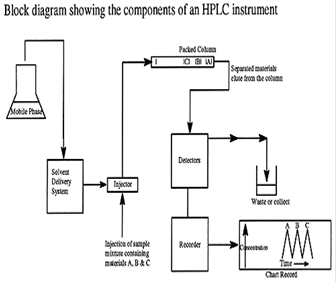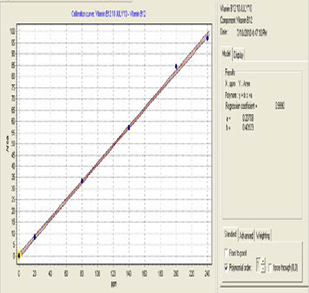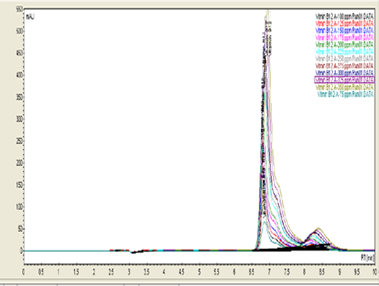|
High-performance liquid chromatography |
||||
|
High-performance liquid chromatography (or high-pressure liquid chromatography, HPLC) is a chromatographic technique that can separate a mixture of compounds and is used to identify, quantify and purify the individual components of the mixture. The HPCL (Varian) (Figure 1) was established in the Environmental Lab in 2010 with the DST grant of the Institute. Basic Principle:Separation is based on the analyte’s relative solubility between two liquid phases. HPLC utilizes different types of stationary phase (typically, hydrophobic saturated carbon chains), a pump that moves the mobile phase(s) and analyte through the column, and a detector that provides a characteristic retention time for the analyte. Analyte retention time varies depending on the temperature of the column, the ratio/composition of solvent(s) used, and the flow rate of the mobile phase. With HPLC, a pump (rather than gravity) provides the higher pressure required to propel the mobile phase and analyte through the densely packed column (Figure 2). HPLC – Modes: Normal Phase - Polar stationary phase and non-polar solvent and Reverse Phase - Non-polar stationary phase and a polar solvent. Unique Features:Fully integrated, fully automated, modular HPLC pumping systems. With a wide range of flow rates, precise solvent flow and system pressure are maintained with a built-in pressure unit. User-friendly pump heads are self-contained units that can be rapidly exchanged by simply loosening a finger-tight clamp. PEEK and titanium pump heads are available to protect biological samples from trace amounts of metal ions that might be released from components in the fluid path. |
||||
|
Location: |
||||
|
Department of Chemical Engineering,Environmental Lab, |
||||
|
Contact: |
||||
|
Prof. Nishith Verma |
||||










